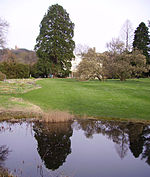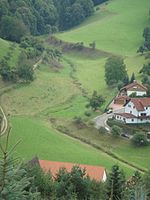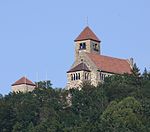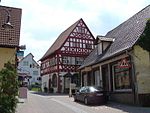Windeck Castle (Weinheim)
Baden-Württemberg building and structure stubsBuildings and structures in WeinheimCastles in Rhein-Neckar-KreisElectoral PalatinateGerman castle stubs ... and 1 more
Ruined castles in Germany

Windeck Castle (German: ) stands on a small hill in Weinheim on the Bergstraße. It was built around 1100 to protect the inhabitants of the Lorsch monastery. It was hugely damaged in 1674 by the troops of King Louis XIV of France. In 1960, the ruins were restored, the palace walls newly erected and the donjon safeguarded. It was acquired in 1978 by the city of Weinheim. In the 1980s, archaeological examinations and conservation works were carried out, and the ground plan was found, which gave an idea of the dimensions of the fortress. Today, the ruins of a fortress Windeck are classified as a historical monument. A beer garden operates on its premises.
Excerpt from the Wikipedia article Windeck Castle (Weinheim) (License: CC BY-SA 3.0, Authors, Images).Windeck Castle (Weinheim)
Alter Burgweg,
Geographical coordinates (GPS) Address Phone number Website External links Nearby Places Show on map
Geographical coordinates (GPS)
| Latitude | Longitude |
|---|---|
| N 49.546111111111 ° | E 8.6772222222222 ° |
Address
Burgruine Windeck
Alter Burgweg 2
69469 , Innenstadt
Baden-Württemberg, Germany
Open on Google Maps










